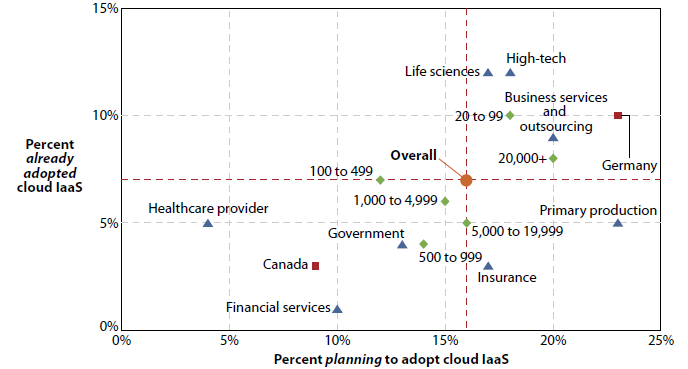From IBM developer works
A new developerWorks global survey of 2,000 IT professionals indicates cloud computing and mobile application development are hot topics today, and are expected to emerge as the most in-demand platforms for software development over the next five years.
Although we don’t know exactly who the respondents are, the majority of developerworks readership are engaged in development of one sort or another and so the survey is a clear indication of how much developer mind-share is supportive of cloud computing in general—-irrespective of particular platforms and technologies.
In fact,
Nine out of 10 respondents to the survey, which reached more than 2,000 IT professionals worldwide, anticipate cloud computing overtaking on-premise computing by 2015 as the primary way organizations acquire IT.
With this level of enthusiastic support, developers are way ahead of their colleagues in Network Administration, Security and the CIO’s office. Of course this is nothing new: IT management have traditionally been initially against many of computing’s major paradigm shifts: minicomputers, PCs and PC networks and mobile devices, and it has often been up to business users or their departmental development staff (often external consultants or ‘power’ business users) armed with corporate credit-cards to pave the way for each successive revolution.
The big disruptions caused by Minicomputers in the 70’s and IBM PCs in the 80’s are now over 25 years in the past, so we are well overdue for a disruptive new development and deployment paradigm.
So far the deployment of Saas products such as Salesforce.com have acted as the initial Trojan Horse in bringing in Cloud and proving its business and cost benefits. The rest of the story still has a long way to play out.





![Reblog this post [with Zemanta]](https://img.zemanta.com/reblog_e.png?x-id=5b2ee144-485f-814b-84bd-5af08b078bb4)